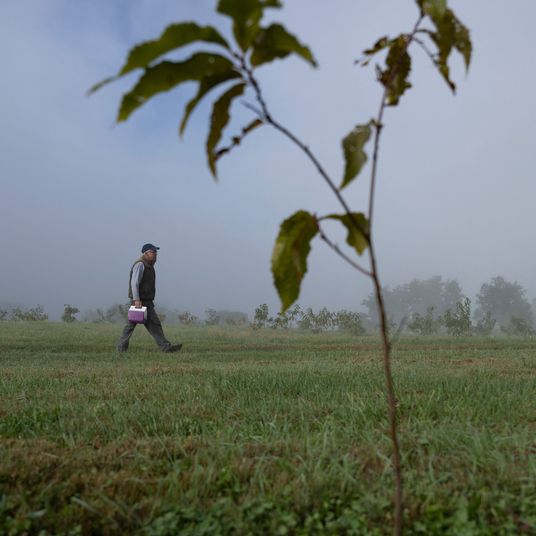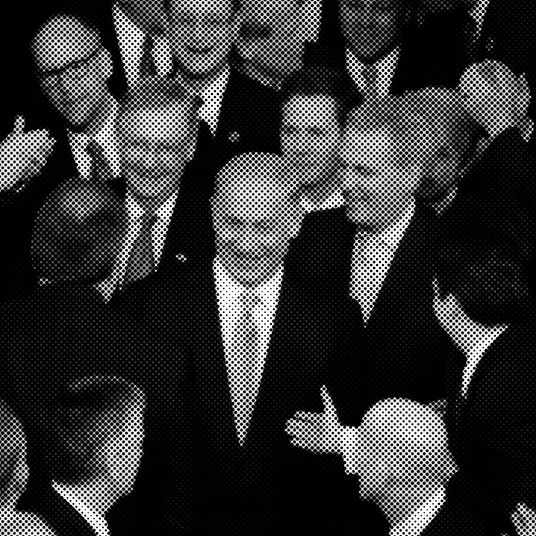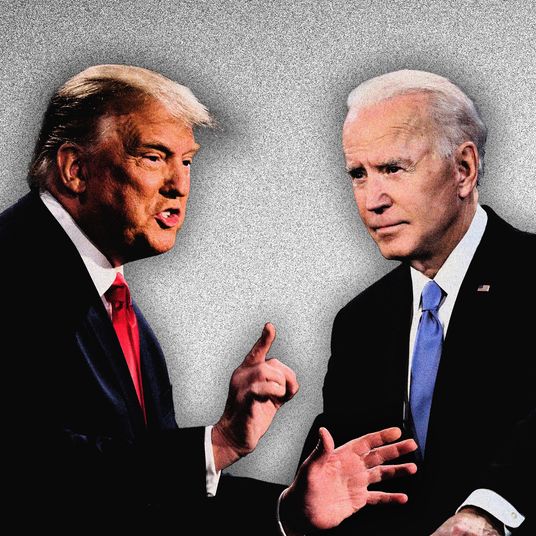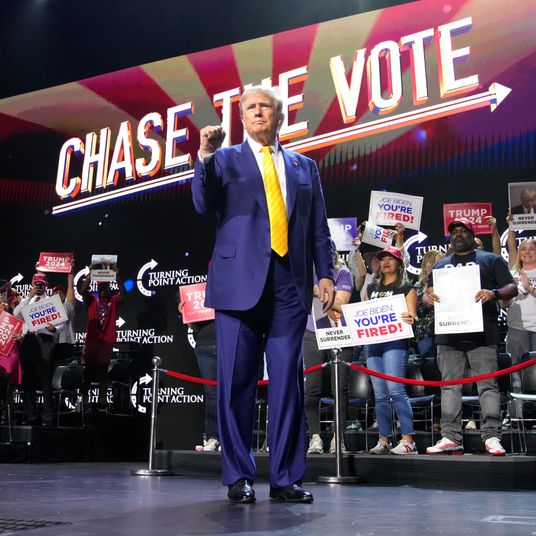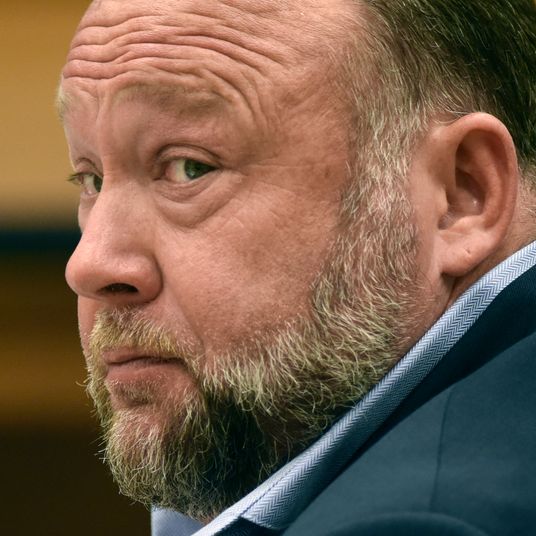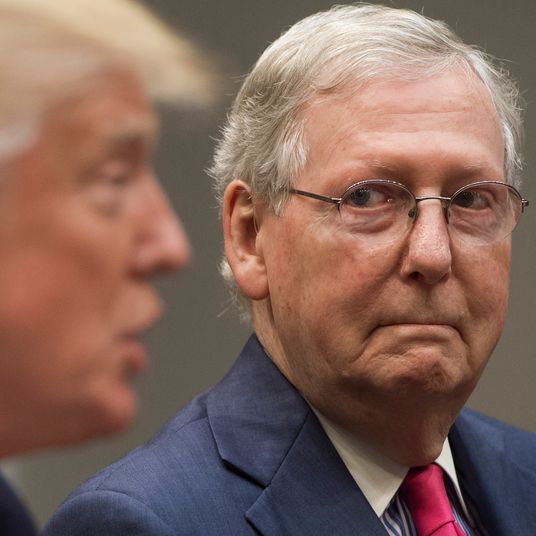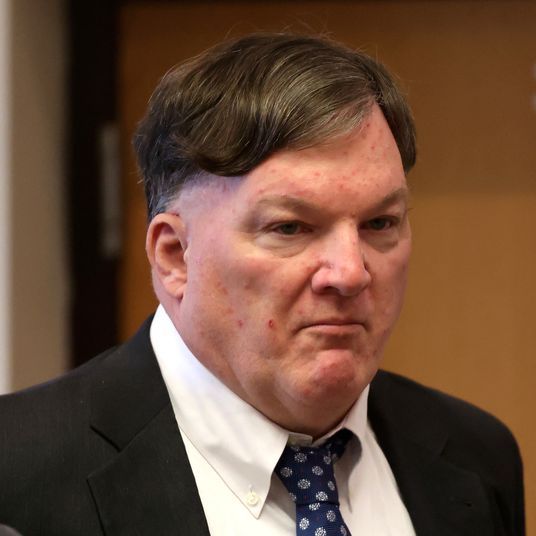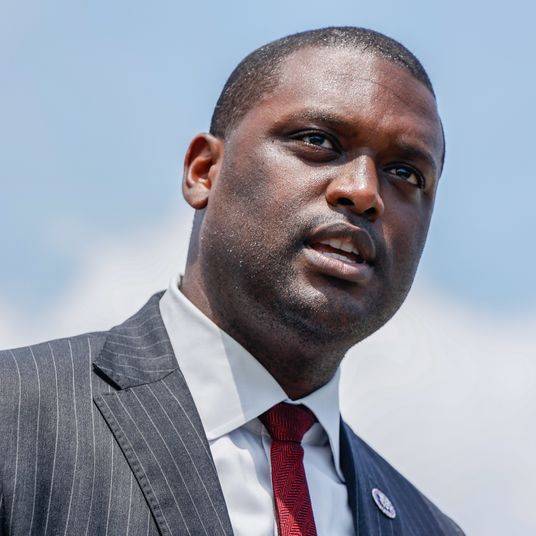When sociologist Margaret Hagerman set out to interview middle-schoolers about their ideology and politics in 2017, she asked each child the same series of questions, warming them up with a few softballs — “What’s your neighborhood like?” and “Do people put up a lot of political signs?” — before moving on to “How did you feel after the presidential election?” and, later, “Some people say there’s a lot of racial tension in America right now. What do you think?”
She still remembers the afternoon when she sat across the table from an 11-year-old girl named Cammie. (All the subjects’ names in Hagerman’s research are pseudonyms.) The two could hear basketballs bouncing on a nearby court as Cammie answered the racial-tension question by critiquing the Black Lives Matter movement for picking on police officers who are just trying to help “us.” Cammie, who is white, told Hagerman she celebrated with her parents the morning after Trump’s election. “I am happy because Trump will look out for people like us,” she said. It was the second time the girl used that word — us.
“I mean, the assumption is whiteness,” Hagerman says.
Between 2017 and 2019, Hagerman, who is on the faculty at Mississippi State University in Starkville, and two Ph.D. students conducted 45 interviews with children ages 10 to 13. All the subjects lived in two politically “purple” towns — one in Massachusetts, the other in Mississippi. Both towns were evenly split between registered Democrats and Republicans, and both had a significant white population living near people of color. It wasn’t Hagerman’s first time interviewing kids this age. From 2011 to 2012, when Barack Obama was president, Hagerman spent two years with the families of 36 white children, also middle-schoolers, in a midwestern city. “I babysat their kids, I interviewed the parents and children, I spent a lot of time observing them with their friends,” she explains. Back then, every white child she interviewed, regardless of their family’s political affiliation, told her racism was “bad” and a serious problem. Some kids didn’t even want to talk to Hagerman about race because they were scared she would think they were racist. “That’s quite different from the white kids in this new study,” Hagerman told me. The study participants’ answers revealed feelings that divided them into three distinct groups but not along the lines one might expect, like Northeast versus Deep South or younger versus older. Rather, the groups were anti-Trump white kids, anti-Trump children of color, and pro-Trump white kids. Cammie turned out to be just one of many in that last cohort who were unbothered by Trump’s overtly racist statements.
“Trump is racist, but I don’t really care,” she told Hagerman. Simon, a 13-year-old in Massachusetts, said he thought Trump seemed racist sometimes but “that was not a good enough reason to dislike him.” Of racial tension in America, Grace, 12, said, “I honestly think it’s fine. I don’t really care.” In Massachusetts, Nathaniel, 11, said, “Yeah, I don’t pay attention to that stuff … Racism doesn’t, like, really like, affect me. I don’t like to think about it.” Though each child was interviewed alone, common refrains emerged. “Listening to kids express dehumanizing racist ideas and think they’re normal really concerns me,” says Hagerman.
Of course, research involving a small number of kids can’t tell us how prevalent these behaviors are or were. But Casey Stockstill, an assistant professor at Dartmouth College, says Hagerman’s qualitative findings are still valuable: If we want to know where the beliefs came from, if we want to know the why behind it all, “you can’t dig into any of that if I send you a little online survey with checkboxes,” she says of the type of study design that could reach thousands, “leaving aside the point that it’s hard to survey 10-year-olds.” It’s also hard to survey white people of any age about race since research indicates that they tend to skip those questions or answer them with less than complete honesty.
In her soon-to-be-released book Children of a Troubled Time: Growing Up With Racism in Trump’s America, Hagerman posits that children’s statements of indifference stem not from naïveté but from following the national political discourse. “Children were aware of what Trump had to say,” Hagerman told me. Even kids whom adults (school administrators, parents, teachers, even a Girl Scout leader) had tried to shield from Trump’s rhetoric said they knew Trump had called Mexican immigrants criminals, drug dealers, and rapists — a statement he made in his June 2015 presidential-announcement speech and again a month later. They had heard Trump denigrate Black celebrities, and not just Colin Kaepernick, whom he blasted throughout 2016 and 2017. Peyton, a white 10-year-old in Mississippi, said he had heard Trump express racist sentiments when talking about Muslim people. Monique, a 12-year-old in Massachusetts, put Trump’s ideals this way: “He likes the people with the lighter skin better.”
“People like to fantasize that if we don’t tell kids about racism, they won’t know it exists yet and they won’t be racist,” says Stockstill, whose book, False Starts, addresses segregation in preschools. Hagerman’s research indicates that kids adopt racist ideology anyway. A host of other studies backs her up: One line of research going back decades shows that children recognize race as early as six months and develop racial biases by ages 3 to 5. Dr. Sylvia Perry, an associate professor of psychology at Northwestern University, and her colleagues summarized a number of studies on the topic in a 2022 paper titled “Will Talking About Race Make My Child Racist?” They concluded that when parents avoided discussing race, greater racial bias, not less, resulted. In contrast, when Perry and her team tasked white parents and their 8-to-12-year-old children with having a “guided racism discussion,” they saw declines in pro-white biases, according to a 2024 paper in Developmental Psychology. In other words, as well meaning as a color-blind ideology may be, it doesn’t prevent racism.
Pro-Trump white kids in Hagerman’s study didn’t just express indifference; they also shared their fears. Some worried that immigrants would take their parents’ jobs and ruin their future and that people from Muslim countries and Black people would inflict violence on them. Seeing pro-Trump messages brought them a sense of safety and joy. Grace said, “I was happy that Trump won because I think he knows how to handle, like, people who threaten us and stuff.” The kids didn’t explicitly describe their joy as arising from a feeling of superiority, belonging, or power, but that’s what Hagerman observed. While the children often said they didn’t care about racism, Hagerman says they were actually “preoccupied with this stuff.”
Hagerman’s interviews with children of color suggested many had noticed the shift in their white peers’ attitudes since Trump took office. Dominick, an 11-year-old in Massachusetts, told Hagerman that a girl in gym class said, “You’re a slave ’cause you’re Black.” And Devion, also 11 and Black, said white students at his school had called him the N-word and shouted “Build the wall!” Mariana, a 10-year-old with an undocumented parent, said of Trump, “He’s trying to kick us out.” That us again but this time connoting a shared victimization. Multiple Black children also experienced the rejection inherent in Trump’s rhetoric as deportation anxiety, telling Hagerman they worried he would send them to Africa.
Some white kids noted an uptick in their peers’ racist behavior too, but typically not those who attended predominantly white schools. Those kids “were just carrying on … completely not even worried about that,” Hagerman says. Kids chanted “Build the wall” at Katie’s middle school in Mississippi, an event she called “funny.” And on a school playground, white kids played a game in which some pretended to be ICE officers chasing down peers who posed as immigrants trying to cross the border. Another set of white kids chanted, “Trump! Trump! Trump!” as they pretended to construct a wall at recess. When Hagerman asked pro-Trump white kids about racism, many of them laughed.
Hagerman doesn’t want to overstate the Trump effect. “It’s not like kids are suddenly thinking, us versus them, and before they weren’t,” she says. She’s also quick to concede that her work would have been stronger if she had conducted “a full-fledged ethnography,” embedding herself in homes and overhearing schoolyard conversations. But Hagerman says she heard enough to conclude that, at least for a subset of white kids, behavior under Trump was new, particularly “the dehumanizing language and the violent ideas and the jokes and the complete lack of concern about how what they’re saying might impact other people.” She worries that Trump’s racist rhetoric normalized white-supremacist ideas and desensitized kids to extremism.
Trump’s message didn’t land with all white kids. Hazel, a white 11-year-old, described herself as “really mad” when immigrant children were picked on in Massachusetts. Knowing so many people voted for Trump was disillusioning for her. “I had no idea the country was so racist!” she told Hagerman. And when describing some of the older, popular white girls he had once tried to befriend, Peyton said, “Those girls sound like monsters, like white-supremacist people back in the ’50s.” He stopped talking to them and stood up to kids who made racist comments on the school bus.
How children respond to Trump’s vitriol seems to reflect their preexisting racial and political educations, says Alex Manning, a lecturer at Yale who has researched how young people make sense of race through youth sports. Some kids heard anti-racist narratives from parents while others heard Trump’s message reinforced at home; still others likely received no explicit guidance and had to decide what to make of Trump’s statements themselves. A nationwide disinvestment in civics education might have contributed to the outsize influence of Trump’s words, Manning says. A 2021 report from a commission funded by the National Endowment for the Humanities and the U.S. Department of Education found that federal spending for civics subjects comes in at about $0.05 per student, while STEM averages about $50 a head. “The very strong, braggadocious racialized narrative that Trump’s pushing can stick more because there’s nothing else there to question it,” says Manning. When kids don’t learn sex ed from their parents or schools, peers and porn step in to fill the void. Similarly, there is a political education happening when there’s no political education happening, Manning says.
Some white children in the anti-Trump group discussed a renewed faith in color blindness. Many were angry and disgusted by Trump but said things like “Once Trump is gone, things will go back to normal.” They wanted to believe that the nation’s racism resided in one bad man and that most Americans were ready for a post-racial society, explains Hagerman. Only three of her white study subjects rejected color-blind logic by, for example, accepting that aspects of society benefit white people — not just in the past but today. While the children in her study who expressed a color-blind mentality weren’t saying “Racism exists and it is fine with me,” like the pro-Trump white children who espoused new white nationalism, Hagerman thinks these two ideologies lead us to the same place: racial inequality.
Stockstill wonders whether Hagerman’s work helps explain a perplexing phenomenon taking place in her college classroom. Stockstill used to see her white students have an epiphany of sorts when she spelled out why trying to be color-blind perpetuates racism. She would tell them that Black applicants still get fewer callbacks for jobs than similarly qualified white applicants, that Black kids still get punished more in school, and that additional contemporary data proves we live in a racist society. “Color-blind framings just mean you can’t even talk about the problems that exist. You are denying them,” she tells her class each quarter. For years, that moment produced stunned understanding, impassioned discussion, and enthusiastic agreement among white students who had been raised to believe Dr. Martin Luther King Jr.’s dream was not to see color, Stockstill says. But lately, she explains, the lecture has “not been hitting.” Many of her students were middle-schoolers during Trump’s presidency, just like Hagerman’s study subjects. They’ll be eligible to vote in their first presidential election in November.


